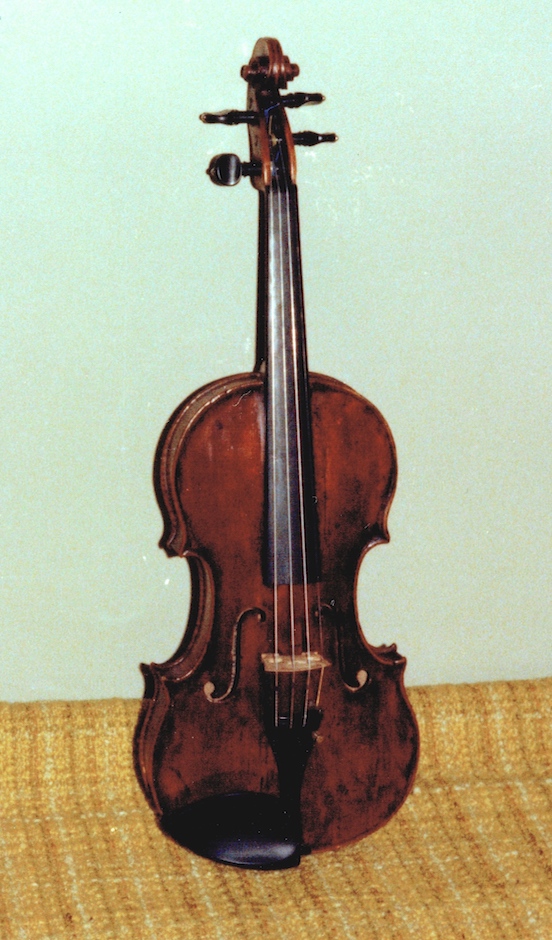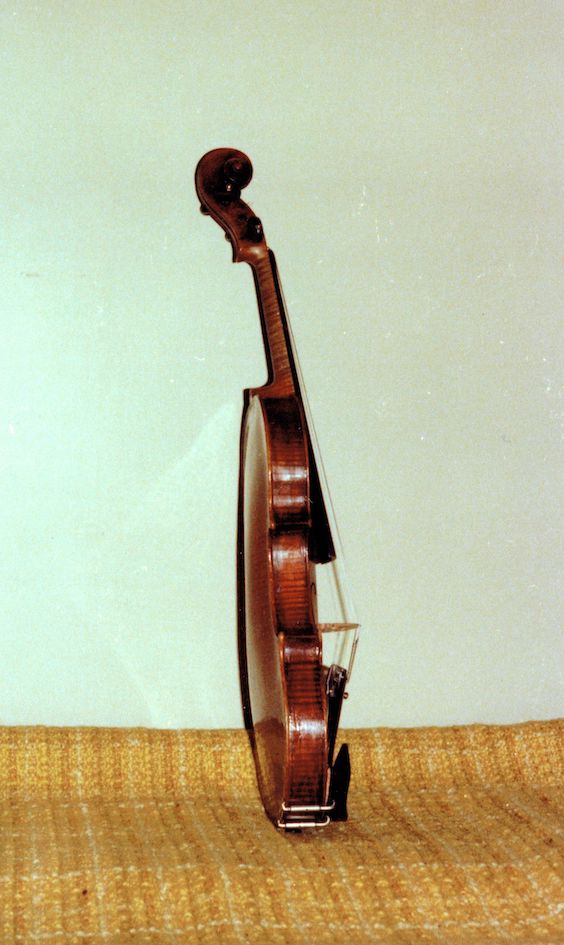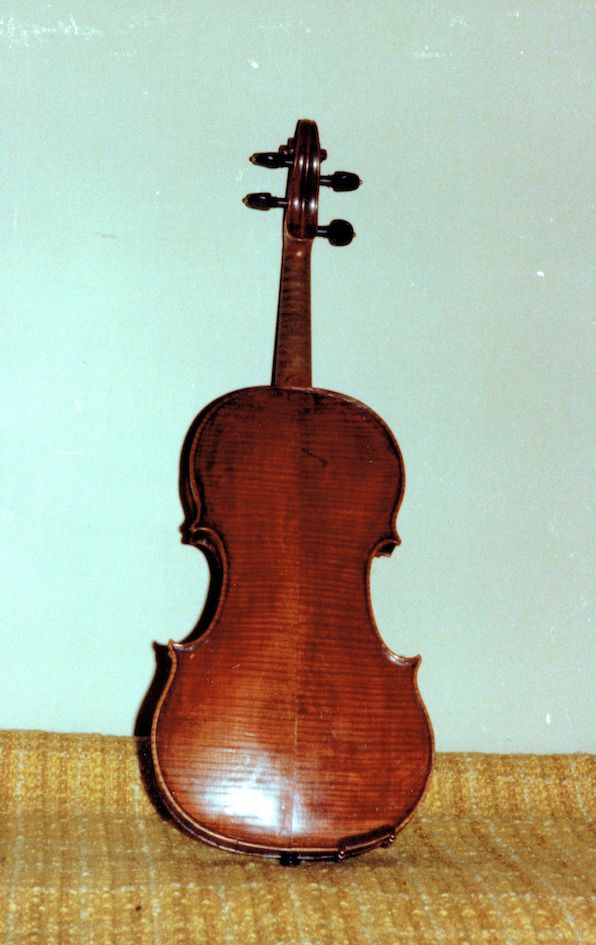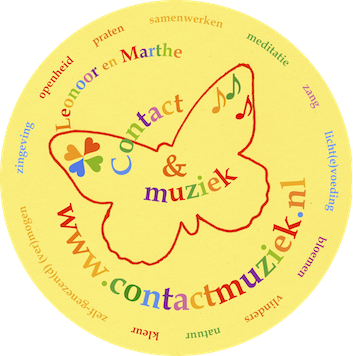| |
| Our viola da gamba (viol) quartet was composed of
a treble (soprano) viol, two alto viols and a bass viol, which is also called tenor viol.
After Jeannette, Leonoor's sister and housemate, passed away, 8 June 2017, we definitively stopped playing the violas da gamba and the lutes. We sold all violas da gamba and lutes.
The viol is the predecessor of the violin and the cello, which have four strings and which are tuned in fifths. Gamba is Italian for
leg, viola da gamba therefore means leg viol, because you keep the instrument between your legs (the alto and the bass viol) or on your lap
(the treble viol).
The viol has frets, like the guitar and six (sometimes seven) strings. The viol
and the lute are, just like the guitar, tuned in fourths with one third. On the viol and the lute the third is in the middle. The sound of the viol
is, also because of the gut strings, soft, softer than the violin and the cello.
All four viols and bows are built by Amit Tiefenbrunn from Israel. He also plays viol and gives viol lessons at the conservatory in Jerusalem. We met Amit at the Oude Muziek Markt from the Festival Oude Muziek in Utrecht in 2007.
He was immediately enthusiastic about our way of living and making music. Leonoor has talked a lot with Amit about music,
sound and way of playing. Amit has a clear idea about the wood and the form of the bows he makes.
His bows are, compared to most other musical instrument makers, lighter and more bent, so we can play soft and search for a light,
clear and warm sound. |
| |








